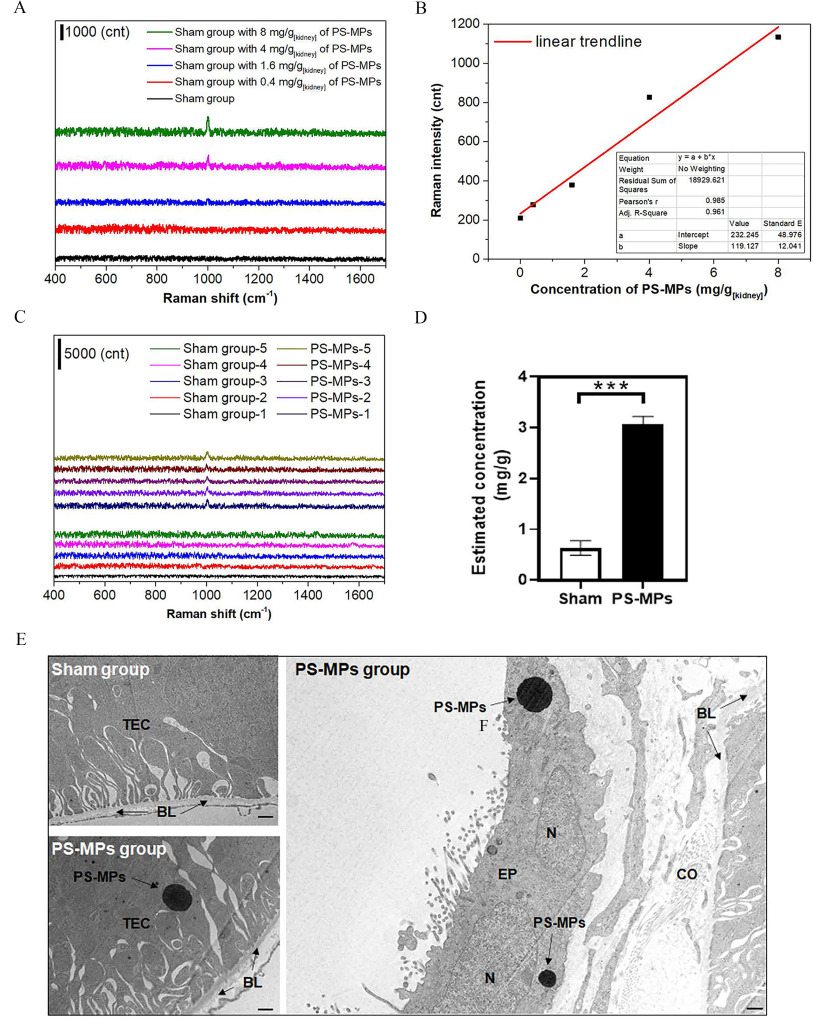Figure 7.
Raman analysis and TEM of kidney tissue from mice treated with PS-MPs. (A) Raman signals for ground kidney samples containing PS-MPs at 0, 0.4, 1.6, 4, and . (B) Raman signal for ring breathing mode. (C) There were no Raman peaks at for the ground kidney samples of the sham-treated mice (sham group 1–5), in contrast to the samples from the mice treated with PS-MPs for 8 wk (PS-MPs group 1–5) (Table S2). (D) Statistical results of Raman analysis for each mouse. The estimated concentrations of PS-MPs in each kidney are shown in Table S2. The mean and SD summary data of (D) are shown in Table S3. . *** compared with the sham group, as determined by -test. Significance: sham group vs. PS-MPs group: . (E) TEM analysis of the kidney tissues (). The sham group and PS-MPs treatment group ( PS-MPs for 8 wk) were observed. . Note: BL, basal lamina; cnt, count; CO, collagen fibril; EP, epithelial cell; N, nucleus; PS-MPs, polystyrene microplastics; TEC, tubular epithelial cell; SD, standard deviation; TEM, transmission electron microscopy.

